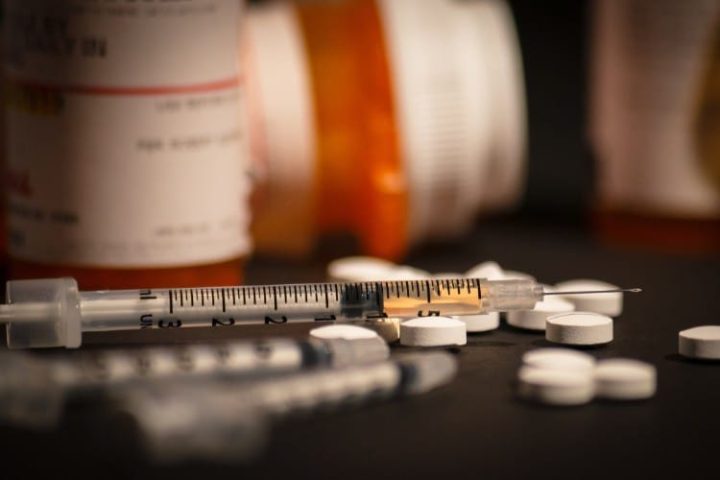
The U.S. Drug Enforcement Administration (DEA) sent out a public safety alert on March 20warning the public about the sharp increase in fentanyl mixed with xylazine. DEA Administrator Anne Milgram stated, “Xylazine is making the deadliest drug threat our country has ever faced, fentanyl, even deadlier.” According to the Centers for Disease Control and Prevention (CDC), 107,735 Americans died from drug poisonings between August 2021 and August 2022.
Fentanyl mixed with xylazine has been found in 48 U.S. states. According to Milgram, “The DEA Laboratory System is reporting that in 2022 approximately 23% of fentanyl powder and 7% of fentanyl pills seized by the DEA contained xylazine.”
Xylazine is an approved veterinary drug used as a sedative; however, it is not approved for use in humans. In fact, when it is added to fentanyl, users are put at a higher risk of an overdose. Xylazine is spreading fast across the United States, further worsening the drug epidemic in cities such as Philadelphia. Xylazine is also known as “tranq,” “tranq dope,” “Philly dope,” and “zombie drug.” In 2021, tranq was found in more than 90 percent of dope samples tested in Philadelphia.
Xylazine has been part of the opioid supply of Puerto Rico since the early 2000s and was noted in Philadelphia as early as 2006. However, it has recently become far more prevalent in the drug supply. A study found that in 10 jurisdictions, xylazine was increasingly present in overdose deaths. It was present in 25.8 percent of overdose deaths in Philadelphia in 2020 compared to two percent in 2015. In 2021, it was involved in 19 percent of overdose deaths in Maryland and 10 percent in Connecticut in 2020. Research shows that deaths associated with xylazine have spread west, following the geographic patterns of fentanyl across the United States, but remain the most prevalent in the Northeast compared to other regions.
Xylazine was added to fentanyl in order to “improve the euphoria and prolong the duration of fentanyl effects.” Fentanyl took over heroin as the primary driver behind overdose deaths in 2016; however, fentanyl’s effects do not last as long as heroin’s. Therefore, xylazine was added to “give fentanyl legs.” While some people intentionally seek out fentanyl with xylazine, not everyone is aware that the tranquilizer has been added.
The risks of xylazine are not fully understood, but it is thought that the tranquilizer can increase the chance of suffering an overdose death when combined with fentanyl. Xylazine causes low blood pressure, amnesia, and low heart rate, which increase the risk of an overdose death when combined with the effects of fentanyl. Naloxone, or Narcan, does not reverse overdose symptoms of the tranquilizer since it is not an opioid.
Xylazine is especially dangerous because of users’ development of skin ulcerations and abscesses. The tranquilizer can cause necrosis (rotting of the skin), which in some cases can lead to amputations. An article by CNN noted how in Philadelphia, drug users and those who work with them can smell the flesh rotting from people’s wounds.
Due to the concerning increase of xylazine being associated with deadly fentanyl overdoses, Senators Catherine Cortez Masto (D-Nev.), Chuck Grassley (R-Iowa), and Maggie Hassan (D-N.H.) introduced the bipartisan Combating Illicit Xylazine Act to address the disturbing rise in fatal overdoses caused by the tranquilizer. The move would classify xylazine as a controlled substance under the Controlled Substances Act (CSA).
The proposed bill would make xylazine a schedule III drug out of a five-category system. The bill would enable theDEA to track the manufacturing of xylazine to ensure it is not diverted to the drug market. It would also require reports on “the prevalence of illicit use of xylazine in the United States and the impacts of such use.” This would include where the drug is being diverted, where it originated, whether any equivalents of the drug present a risk of abuse, whether and to what extent the illegal supply is supplied from the legal supply chain, and recommendations for Congress on whether xylazine should be transferred to another schedule under the five-level system for substances.
Despite the alarming rise of xylazine, federal, state, and local law enforcement do not have the tools to track the drug and prosecute traffickers. Senator Cortez Masto, lead sponsor of the bill, said in a statement, “This bipartisan legislation will ensure the DEA and local law enforcement have the tools they need to get xylazine off our streets while protecting its important use as a veterinary tranquilizer.”
The legislation is endorsed by organizations such as the American Veterinary Medical Association, Nevada Cattlemen Association, North American Meat Institute, Animal Health Institute, and more. While there are many supporters of the bill, a CNN article points out criticism of the bill from the National Harm Reduction Coalition. The organization claims that criminalization of drugs will not reduce drug use or addiction. The director of the Drug Policy Alliance’s Office of Federal Affairs also voiced her concerns stating that the bill is likely to disproportionately affect drug users and those lowest on the distribution chain.
While the new bill may address an emerging threat in the drug epidemic, it is important to ensure the prevention of drugs entering communities throughout the country. As cartels in Mexico are responsible for the vast majority of fentanyl that is trafficked into the United States, it is imperative that the United States secures its southern border to stem the import of dangerous drugs.
It is also important to note that the DEA is an unconstitutional federal agency responsible for enforcing drug laws. The U.S. Constitution does not grant the federal government any authority to regulate and criminalize drugs. Since any powers not granted to the federal government are reserved for states, each state should be responsible for criminalizing drugs as they see fit. Effective policing of our southern border and other ports of entry, along with state laws, are a much better solution to the problem than the DEA.



